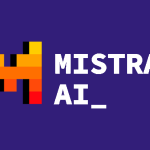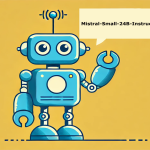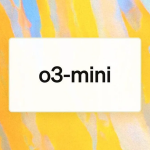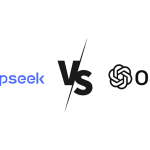MiniMax AI Model: China’s Rising Power in the Global AI Landscape
Artificial intelligence (AI) has been one of the most transformative technologies of the 21st century, revolutionizing everything from business operations to consumer experiences. As AI becomes increasingly vital to the global economy, the race to develop advanced AI models intensifies. While the U.S. has long been considered the leader in AI development, Chinese companies are rapidly closing the gap. One such company, MiniMax, is quickly establishing itself as a major force in the AI space, with new models that are making waves across the industry.
MiniMax AI Model, a Chinese AI startup founded in 2021, has garnered attention for its impressive growth, fueled by $850 million in venture capital and a valuation of more than $2.5 billion. With major backers like Alibaba and Tencent, MiniMax is positioning itself as a serious competitor to industry giants like OpenAI, Google, and Meta. Its latest breakthroughs in AI modeling have the potential to disrupt the global AI landscape.
In this article, we’ll explore MiniMax’s innovative AI models, what makes them stand out, and the implications for the future of AI development. We’ll also discuss the challenges and opportunities that MiniMax faces in a competitive and often politically charged global market.
Introduction: MiniMax AI Model’s Emergence on the Global AI Stage
The AI industry has traditionally been dominated by U.S.-based companies like OpenAI, Google, and Microsoft, but MiniMax is rapidly changing that dynamic. Founded by former employees of SenseTime, one of China’s largest AI firms, MiniMax AI Model has quickly made a name for itself with its groundbreaking models. The company’s success is a reflection of China’s broader ambitions to lead the world in AI technology.
What sets MiniMax apart from other players in the AI field is its ability to develop large-scale, highly sophisticated AI models that can handle multiple tasks simultaneously. The company has recently launched three key models: MiniMax-Text-01, MiniMax-VL-01, and T2A-01-HD. These models are built to address different facets of AI: natural language processing, multimodal understanding, and speech generation, respectively. Together, they showcase MiniMax AI Model’s ambition to be at the forefront of the next generation of AI technology.
Let’s take a closer look at each of these models and their implications for the AI industry.
MiniMax’s Latest AI Models: Innovation and Competition
MiniMax-Text-01: A Text-Only Model That Rivals Industry Giants
MiniMax-Text-01 is a text-only AI model with a massive 456 billion parameters. For reference, parameters in AI models represent the internal configurations that allow the system to make predictions and generate outputs. The more parameters a model has, the more “intelligent” it can become, as it can process and analyze more complex data.
MiniMax-Text-01 is designed to outperform existing models from companies like Google and OpenAI. It has been tested on benchmarks like MMLU (Massive Multitask Language Understanding) and SimpleQA, which evaluate a model’s ability to answer factual questions and solve complex math problems. In these tests, MiniMax-Text-01 has shown superior performance compared to Google’s recently unveiled Gemini 2.0 Flash, demonstrating its capabilities in a wide range of tasks.
What truly sets MiniMax-Text-01 apart is its context window. A model’s context window refers to the amount of information or text the model can “remember” and process before generating a response. MiniMax-Text-01 boasts an extraordinary context window of 4 million tokens. To put that in perspective, that’s the equivalent of over five copies of War and Peace. This large context window allows the model to analyze and understand long passages of text without losing track of crucial details. As a result, MiniMax-Text-01 is exceptionally skilled at understanding complex, multi-part queries and generating responses that are contextually rich and coherent.
MiniMax-VL-01: Multimodal AI for the Next Era of Understanding
MiniMax-VL-01 is a multimodal AI model, meaning it can process both text and images. This model represents the future of AI, where systems are expected to seamlessly understand and respond to multiple types of data simultaneously. In the case of MiniMax-VL-01, it is trained to analyze images and diagrams in conjunction with textual data, making it particularly useful for tasks that involve visual information, such as interpreting charts or graphs.
MiniMax-VL-01 has been tested against other leading multimodal models, including Anthropic’s Claude 3.5 Sonnet. While it doesn’t quite outperform Google’s Gemini 2.0 Flash in all aspects, MiniMax-VL-01 shines in its ability to answer questions related to visual data. For example, the model can accurately identify the peak of a line in a graph or describe trends in a complex chart. This ability to understand both text and images is crucial for applications like visual search, content moderation, and accessibility tools for the visually impaired.
The importance of multimodal understanding in AI cannot be overstated. As the demand for more intuitive AI applications increases, having systems that can understand and respond to multiple types of input—whether it’s text, images, or even video—will be essential.
T2A-01-HD: Revolutionizing Speech Generation with Realistic Audio
T2A-01-HD is MiniMax’s speech generation model, and it represents a leap forward in the development of synthetic speech. This model is capable of producing realistic speech with adjustable cadence, tone, and tenor, and it can generate audio in 17 languages, including both English and Chinese. What makes T2A-01-HD particularly impressive is its ability to clone voices based on just 10 seconds of an audio sample.
Synthetic speech has seen significant advancements in recent years, and T2A-01-HD is part of this trend. Its applications could range from creating realistic voice assistants to providing content creators with tools to generate voiceovers and even personalized AI avatars. Early reviews suggest that the quality of T2A-01-HD’s outputs is on par with or even superior to existing models from companies like Meta and startups such as PlayAI. However, MiniMax AI Model has not yet published benchmark comparisons with other audio-generating models, so it remains to be seen how T2A-01-HD stacks up in real-world applications.
MiniMax’s Competitive Edge: Powering Innovation with Investment
MiniMax AI Model’s impressive models have been made possible through significant investments from major players like Alibaba and Tencent. These companies have provided not only financial backing but also access to cutting-edge resources, including AI hardware and infrastructure. This support has allowed MiniMax to develop some of the most powerful AI models on the market today.
However, there are also challenges that MiniMax AI Model must overcome. For one, the company has faced legal scrutiny regarding its use of proprietary data. Some of MiniMax AI Model’s models, such as MiniMax-Text-01 and MiniMax-VL-01, are not truly open-source in the traditional sense. While they can be downloaded from platforms like GitHub and Hugging Face, the underlying training data is not publicly available, making it difficult for developers to recreate or modify the models.
Additionally, MiniMax’s models are subject to a restrictive license, which limits how the models can be used. For instance, platforms with more than 100 million monthly active users must request special permission from MiniMax AI Model to use the models, preventing certain companies from integrating them into their systems. These limitations could hinder the widespread adoption of MiniMax’s technology, but the company’s innovation and financial backing may help it overcome these barriers.
Challenges and Opportunities in the AI Arms Race
MiniMax AI Model’s rise comes at a time of increasing tension between China and the U.S., particularly in the realm of technology. The Biden administration has proposed new export restrictions on AI technologies to China, including limitations on advanced AI chips and models. This move is part of a broader effort to maintain U.S. dominance in emerging technologies and prevent China from gaining a competitive edge.
If these export restrictions come into effect, it could impact the future availability of critical components needed to build and train AI models like MiniMax-Text-01 and MiniMax-VL-01. However, MiniMax’s ability to secure significant investment and develop its own proprietary technology could mitigate the effects of these restrictions. Additionally, as AI continues to evolve, the global demand for innovative models like MiniMax’s is likely to grow, creating new opportunities for the company to expand its reach.
Conclusion: MiniMax’s Role in Shaping the Future of AI
MiniMax AI Model is quickly establishing itself as a global leader in AI, thanks to its innovative models and strategic backing from China’s tech giants. Its focus on large-scale models with impressive capabilities in text, multimodal understanding, and speech generation positions the company to play a central role in the future of AI development. While challenges such as regulatory restrictions and competitive pressures remain, MiniMax’s cutting-edge technology ensures that it will continue to be a major player in the AI race.
For businesses and developers looking to leverage the latest AI advancements, MiniMax AI Model’s models offer exciting possibilities. As AI continues to evolve, staying informed about developments from companies like MiniMax AI Model will be crucial to staying ahead in the ever-changing landscape of artificial intelligence.
Stay ahead of the curve in AI technology—subscribe to our newsletter for the latest updates and insights.







